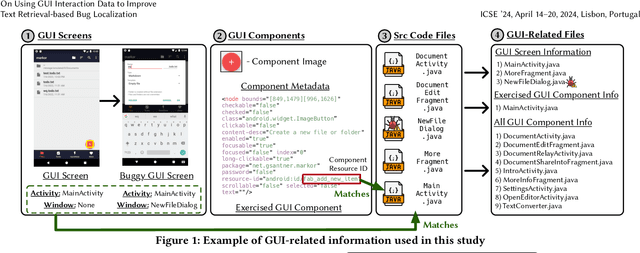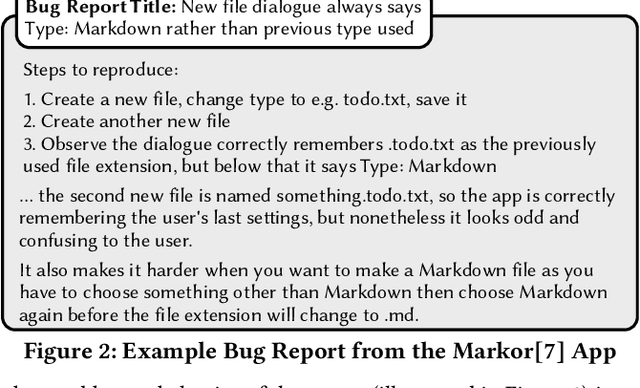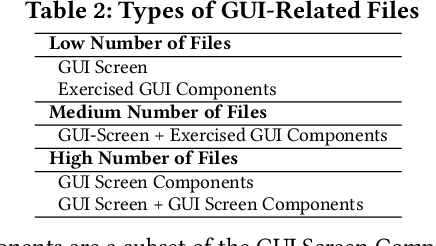Seyed Hooman Mostafavi
On Using GUI Interaction Data to Improve Text Retrieval-based Bug Localization
Oct 12, 2023



Abstract:One of the most important tasks related to managing bug reports is localizing the fault so that a fix can be applied. As such, prior work has aimed to automate this task of bug localization by formulating it as an information retrieval problem, where potentially buggy files are retrieved and ranked according to their textual similarity with a given bug report. However, there is often a notable semantic gap between the information contained in bug reports and identifiers or natural language contained within source code files. For user-facing software, there is currently a key source of information that could aid in bug localization, but has not been thoroughly investigated - information from the GUI. We investigate the hypothesis that, for end user-facing applications, connecting information in a bug report with information from the GUI, and using this to aid in retrieving potentially buggy files, can improve upon existing techniques for bug localization. To examine this phenomenon, we conduct a comprehensive empirical study that augments four baseline techniques for bug localization with GUI interaction information from a reproduction scenario to (i) filter out potentially irrelevant files, (ii) boost potentially relevant files, and (iii) reformulate text-retrieval queries. To carry out our study, we source the current largest dataset of fully-localized and reproducible real bugs for Android apps, with corresponding bug reports, consisting of 80 bug reports from 39 popular open-source apps. Our results illustrate that augmenting traditional techniques with GUI information leads to a marked increase in effectiveness across multiple metrics, including a relative increase in Hits@10 of 13-18%. Additionally, through further analysis, we find that our studied augmentations largely complement existing techniques.
 Add to Chrome
Add to Chrome Add to Firefox
Add to Firefox Add to Edge
Add to Edge